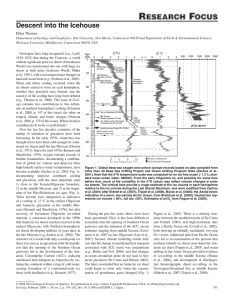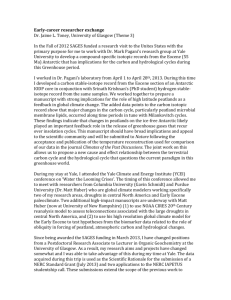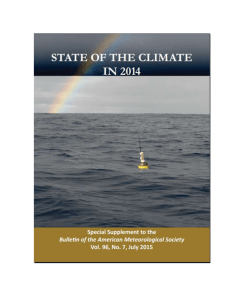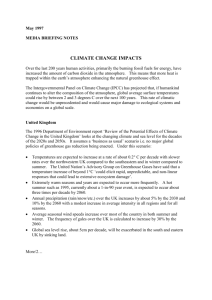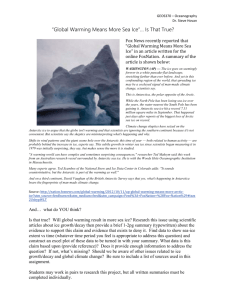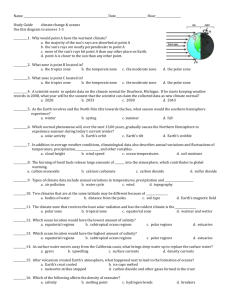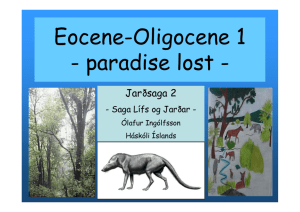Atmospheric and oceanic impacts of Antarctic glaciation across the
advertisement
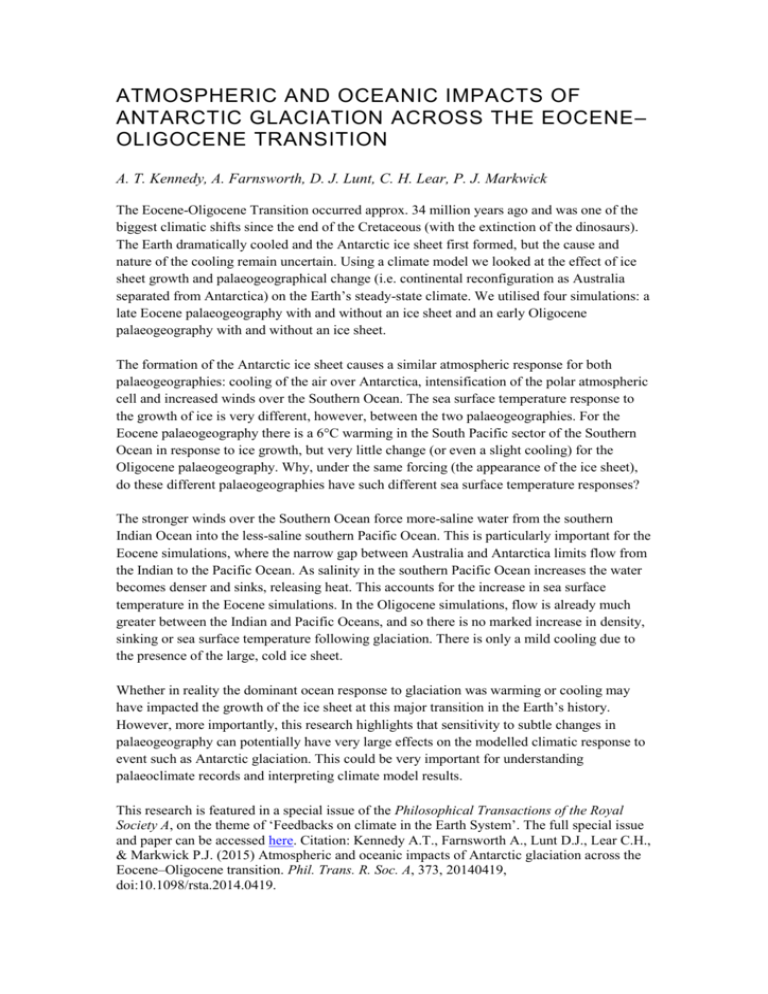
ATMOSPHERIC AND OCEANIC IMPACTS OF ANTARCTIC GLACIATION ACROSS THE EOCENE– OLIGOCENE TRANSITION A. T. Kennedy, A. Farnsworth, D. J. Lunt, C. H. Lear, P. J. Markwick The Eocene-Oligocene Transition occurred approx. 34 million years ago and was one of the biggest climatic shifts since the end of the Cretaceous (with the extinction of the dinosaurs). The Earth dramatically cooled and the Antarctic ice sheet first formed, but the cause and nature of the cooling remain uncertain. Using a climate model we looked at the effect of ice sheet growth and palaeogeographical change (i.e. continental reconfiguration as Australia separated from Antarctica) on the Earth’s steady-state climate. We utilised four simulations: a late Eocene palaeogeography with and without an ice sheet and an early Oligocene palaeogeography with and without an ice sheet. The formation of the Antarctic ice sheet causes a similar atmospheric response for both palaeogeographies: cooling of the air over Antarctica, intensification of the polar atmospheric cell and increased winds over the Southern Ocean. The sea surface temperature response to the growth of ice is very different, however, between the two palaeogeographies. For the Eocene palaeogeography there is a 6°C warming in the South Pacific sector of the Southern Ocean in response to ice growth, but very little change (or even a slight cooling) for the Oligocene palaeogeography. Why, under the same forcing (the appearance of the ice sheet), do these different palaeogeographies have such different sea surface temperature responses? The stronger winds over the Southern Ocean force more-saline water from the southern Indian Ocean into the less-saline southern Pacific Ocean. This is particularly important for the Eocene simulations, where the narrow gap between Australia and Antarctica limits flow from the Indian to the Pacific Ocean. As salinity in the southern Pacific Ocean increases the water becomes denser and sinks, releasing heat. This accounts for the increase in sea surface temperature in the Eocene simulations. In the Oligocene simulations, flow is already much greater between the Indian and Pacific Oceans, and so there is no marked increase in density, sinking or sea surface temperature following glaciation. There is only a mild cooling due to the presence of the large, cold ice sheet. Whether in reality the dominant ocean response to glaciation was warming or cooling may have impacted the growth of the ice sheet at this major transition in the Earth’s history. However, more importantly, this research highlights that sensitivity to subtle changes in palaeogeography can potentially have very large effects on the modelled climatic response to event such as Antarctic glaciation. This could be very important for understanding palaeoclimate records and interpreting climate model results. This research is featured in a special issue of the Philosophical Transactions of the Royal Society A, on the theme of ‘Feedbacks on climate in the Earth System’. The full special issue and paper can be accessed here. Citation: Kennedy A.T., Farnsworth A., Lunt D.J., Lear C.H., & Markwick P.J. (2015) Atmospheric and oceanic impacts of Antarctic glaciation across the Eocene–Oligocene transition. Phil. Trans. R. Soc. A, 373, 20140419, doi:10.1098/rsta.2014.0419. Composite satellite image of what the Earth may have looked like Prior to Antarctic glaciation during the late Eocene (image by Alan Kennedy). Special issue cover (image from Royal Society).
